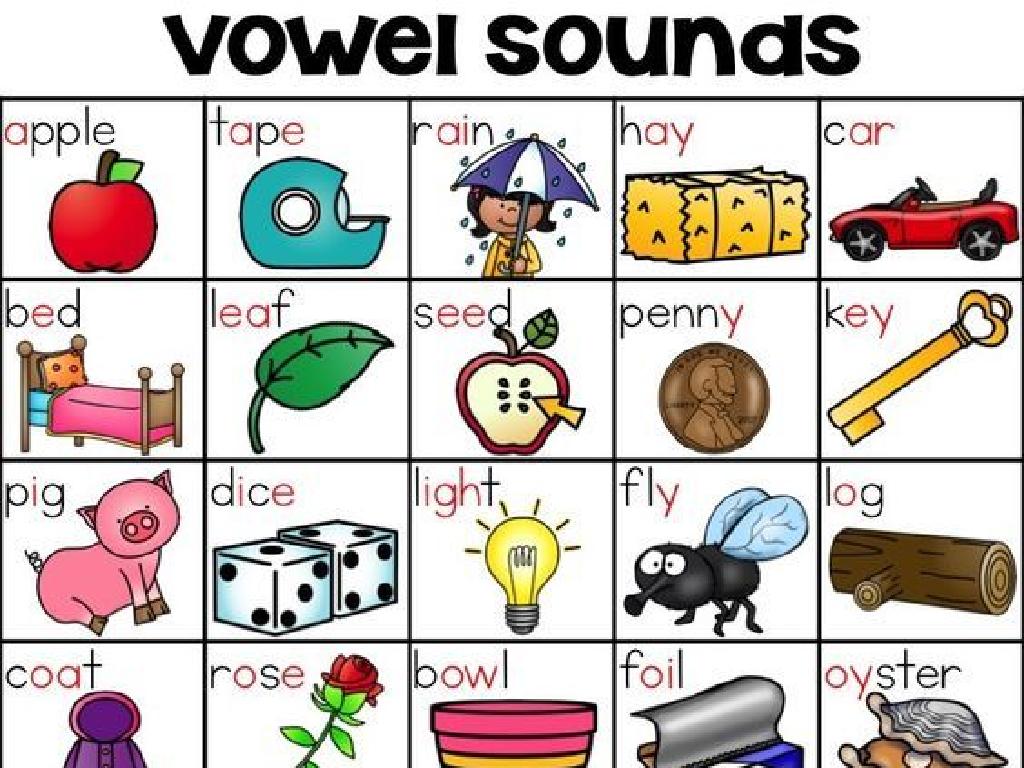Identify And Select Countries Of Asia: Region 4
Subject: Social studies
Grade: Sixth grade
Topic: Asia: Geography
Please LOG IN to download the presentation. Access is available to registered users only.
View More Content
Exploring Asia: Region 4
– Asia: The largest continent
– Asia is the world’s biggest continent in both size and population.
– Diversity: Cultures, languages, landscapes
– Home to a multitude of cultures, over 2,300 languages, and varied landscapes from mountains to beaches.
– Focus on Region 4 countries
– We’ll learn about countries like Singapore, Malaysia, and others in this specific area.
– Mapping exercise: Identify Region 4
|
Begin with an introduction to Asia, emphasizing its size and the vast number of people living there. Highlight the rich diversity found across the continent, including the many cultures, languages, and natural landscapes. Explain that today’s focus will be on Region 4 of Asia, which includes Southeast Asian countries. Engage students with a mapping exercise to identify these countries, enhancing their geographical skills and understanding of Asia’s complexity. This activity will help students visually connect with the material and remember the countries’ locations.
Exploring Asia’s Diverse Geography
– Overview of Asia’s geography
– Asia is the largest continent with various terrains.
– Asia’s major landforms
– Mountains like the Himalayas, vast plains, and plateaus.
– Key bodies of water
– Rivers like the Yangtze, lakes like Baikal, and seas like the South China Sea.
– Climate zones of Asia
– Ranges from arctic to tropical climates across the continent.
|
This slide introduces students to the vast and diverse geography of Asia. Start by discussing Asia’s status as the largest continent and its wide range of physical features. Highlight significant landforms such as the Himalayas, the Gobi Desert, and the Tibetan Plateau. Discuss the importance of major rivers, lakes, and seas that are crucial to the livelihoods of Asian populations. Explain the various climate zones found in Asia, from the freezing arctic tundra of Siberia to the hot, humid tropics of Southeast Asia. Use maps to help students visualize the geography and encourage them to think about how these geographic features influence the culture, economy, and daily life in different Asian countries.
Exploring South Asia: Region 4
– Introduction to South Asia
– South Asia, also known as the Indian subcontinent
– Countries in Region 4
– India, Pakistan, Bangladesh, Nepal, Bhutan, Sri Lanka, Maldives
– Capitals and locations
– India’s capital is New Delhi; Pakistan’s is Islamabad
– Unique geographical features
– The Himalayas in Nepal and Bhutan, Maldives’ coral islands
|
This slide introduces students to South Asia, a region rich in diversity and history. Begin by explaining the term ‘Region 4’ refers to South Asia. List the countries and discuss their significance in the region. For each country, mention its capital and a key geographical feature, such as the Himalayas for Nepal and Bhutan, or the coral islands of the Maldives. This will give students a basic understanding of the region’s geography and prepare them for more in-depth exploration in future lessons. Encourage students to locate these countries on a map as a class activity.
India: A Closer Look
– Capital: New Delhi
– Diversity in culture and languages
– Home to multiple cultures, over 1,600 languages spoken
– Rich historical background
– From ancient civilizations to a modern republic
– India’s regional and global role
– A key economic and strategic partner internationally
|
This slide aims to introduce students to India, focusing on its capital, cultural diversity, historical significance, and its role on both a regional and global scale. New Delhi, the capital, is the center of government and a hub for culture and history. India’s diversity is vast, with a multitude of languages and cultures coexisting. Its history spans from ancient civilizations like the Indus Valley to its current status as the world’s largest democracy. India’s influence extends beyond its borders, playing a crucial role in international economics, politics, and environmental issues. Encourage students to explore India’s rich tapestry of traditions and its impact on the world today.
Exploring Pakistan and Bangladesh
– Capitals: Islamabad and Dhaka
– Formation and cultural heritage
– Pakistan was part of British India; Bangladesh was East Pakistan before independence.
– Geographical highlights
– Pakistan has mountains, plains; Bangladesh has rivers, deltas.
– Economic overview
– Both have developing economies with textiles and agriculture as major sectors.
|
This slide aims to introduce students to Pakistan and Bangladesh, focusing on their capitals, history, culture, geography, and economy. Islamabad, the planned city capital of Pakistan, and Dhaka, the bustling capital of Bangladesh, are starting points for understanding these nations. Discuss the partition of British India in 1947 leading to the formation of Pakistan and later the independence of Bangladesh in 1971. Highlight the rich cultural heritage of both countries, influenced by various historical eras. Geographically, emphasize Pakistan’s diverse landscape with its northern mountain ranges and fertile plains, and Bangladesh’s riverine and deltaic system. Economically, note that both countries are growing and have significant textile industries and agricultural bases. Encourage students to research more about how these countries’ geographies have shaped their economies and cultures.
The Himalayan Nations: Nepal and Bhutan
– Nepal and Bhutan: Landlocked
– Both countries are surrounded by India, China
– Capitals: Kathmandu and Thimphu
– Kathmandu is Nepal’s center of culture, Thimphu is Bhutan’s political and economic heart
– Himalayas’ Geographical Significance
– The Himalayas are home to the world’s highest peaks, including Mount Everest
– Cultural Significance of the Himalayas
– Rich traditions, festivals, and Buddhist monasteries reflect the unique heritage
|
This slide introduces students to the Himalayan nations of Nepal and Bhutan, emphasizing their status as landlocked countries and their capitals. Highlight the importance of the Himalayas, not just as a geographical landmark with the world’s highest mountains, but also as a cultural hub with deep-rooted traditions and religious significance. Discuss how the Himalayas have shaped the culture, economy, and very identity of these nations. Encourage students to explore how the geography of a region can influence the lifestyle and culture of its inhabitants. Provide examples of local festivals, architecture, and religious practices that are unique to the Himalayan region.
Island Nations of Asia: Sri Lanka and Maldives
– Capitals: Colombo and Malé
– Colombo is Sri Lanka’s capital, Malé is the capital of Maldives
– Unique geography & biodiversity
– Sri Lanka has diverse landscapes, Maldives known for coral islands
– Tourism’s role in economy
– Both countries have robust tourism industries vital for their economies
– Conservation efforts
– Efforts to protect unique environments against climate change
|
This slide introduces students to the island nations of Sri Lanka and Maldives, focusing on their capitals, unique geographical features, and the significant role of tourism in their economies. Discuss the capitals, Colombo and Malé, as the political and cultural hubs. Highlight the rich biodiversity of Sri Lanka with its varied landscapes and the Maldives with its coral islands and marine life. Explain how tourism is a major economic driver for these countries, attracting visitors from around the world. Emphasize the importance of conservation efforts to protect their unique environments, especially in the face of climate change. Encourage students to think about the impact of tourism on the economy and environment.
Class Activity: Mapping Asia’s Region 4
– Engage in map labeling activity
– Identify Region 4 countries
– Focus on countries like Thailand, Vietnam, Malaysia, and Singapore
– Label each country on your map
– Discuss interesting country facts
– Share facts like capital cities, languages, or unique traditions
|
This interactive class activity is designed to help students learn about the countries in Asia’s Region 4 through hands-on experience. Provide each student with a blank map of Asia and guide them to identify and label countries such as Thailand, Vietnam, Malaysia, and Singapore. Encourage them to use an atlas or online resources if needed. After labeling, students should pair up and discuss one interesting fact about each country they’ve labeled, which could be about the country’s capital, official language, or a unique cultural tradition. This activity will not only help in memorizing the geography but also in understanding the diversity within the region. Possible variations of the activity could include creating a fact file for each country, presenting their findings to the class, or even a quiz game to recap the lesson.
Review and Reflection: Asia’s Region 4
– Recap of today’s lesson
– Key facts about Asia’s Region 4
– Region 4 includes countries like Thailand, Vietnam, and Malaysia
– Reflect on diversity
– Consider cultural, linguistic, and ecological variety
– Discuss regional significance
– Importance in global economy, politics, and culture
|
This slide aims to consolidate the students’ knowledge from the lesson on Asia’s Region 4. Begin with a brief recap, highlighting the main points covered. Ask students to list countries in Region 4 and share interesting facts they’ve learned about each. Encourage them to reflect on the diversity within these countries, discussing cultural, linguistic, and ecological aspects. Lastly, facilitate a conversation on why this region is significant globally, touching on its economic contributions, political relevance, and cultural richness. This reflection will help students appreciate the complexity and importance of Asia’s Region 4 in the world context.
Homework: Explore a Country in Asia’s Region 4
– Research a Region 4 country
– Write a paragraph on geography
– Cover landforms, climate, and natural resources
– Include cultural aspects
– Discuss language, traditions, and food
– Add an interesting fact
– Could be about history, achievements, or a famous landmark
|
This homework assignment is designed to deepen students’ understanding of Asia’s Region 4 by having them engage in independent research. Students should select one country from the region and write a paragraph that includes the country’s geography, such as its landforms, climate, and natural resources. They should also explore cultural elements like language, traditions, and cuisine. Encouraging them to find an interesting fact will make their presentation more engaging. This activity will help students practice research skills, writing, and public speaking. In the next class, students will share their findings, providing a platform for peer learning and discussion.






